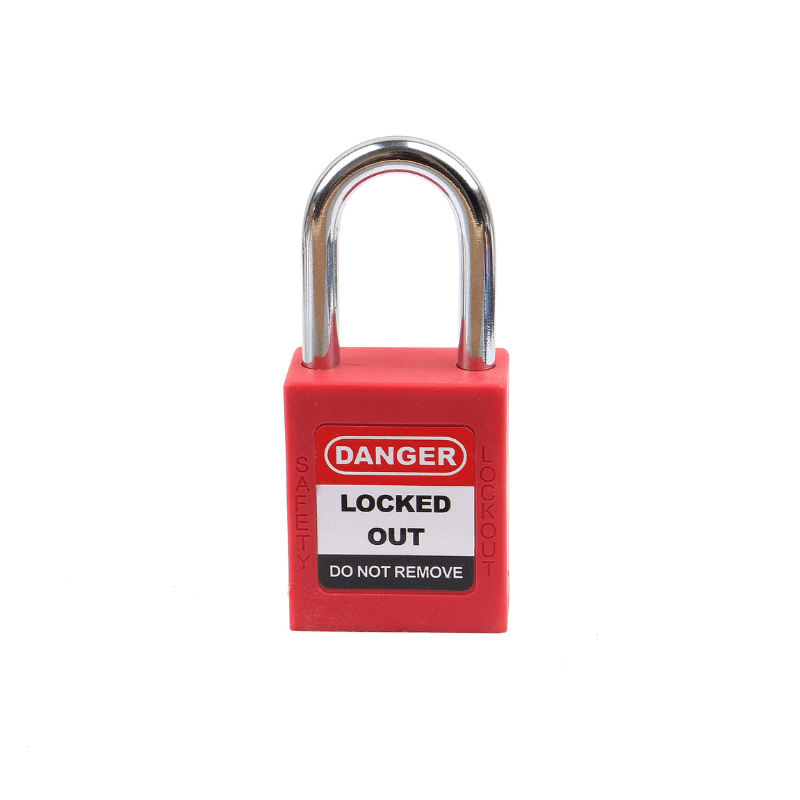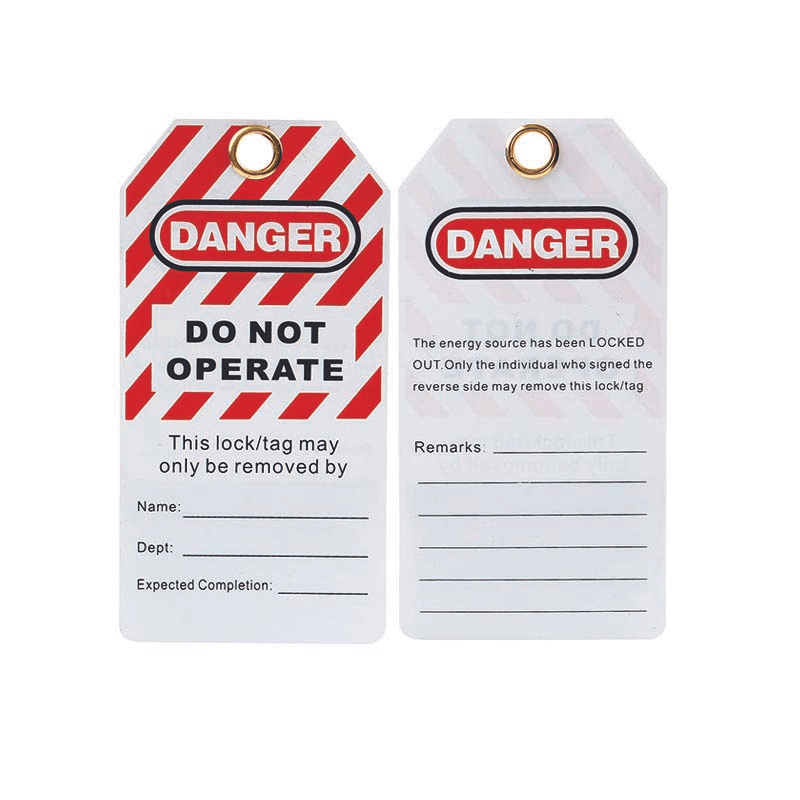That familiar click of a padlock on a machine—it’s the sound of safety, right? For decades, brightly colored locks and warning tags have been the universal symbols of a secured machine, protecting workers from hazardous energy during maintenance.
But what if that lock is just the final, fragile step in a broken process?
The hard truth is that the tags and locks themselves are rarely the problem. The real danger lies in the manual, paper-based systems propping them up. In today’s complex industrial environments—with rotating contractors, multi-site operations, and tightening regulations—relying on clipboards, binders, and memory is no longer just inefficient. It’s a gamble.
This article digs into the critical failures of manual Lockout Tagout (LOTO), explores the real-world consequences, and shows how digital solutions like Zentri are finally building a safer, smarter, and more compliant future.
Table of Contents
The Cracks in the Armor: Where Manual LOTO Fails
Manual LOTO systems are vulnerable by design. They operate on the assumption of flawless human performance and perfect record-keeping—an ideal that rarely survives contact with reality. Here are the five critical failure points.
1. The Human Factor: We All Make Mistakes
At its core, manual LOTO is a memory test. Did the technician follow all 17 steps in the correct sequence? Was the checklist initialed in the right box? Was the correct valve isolated?
Even the most experienced professionals are human. Under pressure, during a long shift, or in a non-routine scenario, a single missed step or a forgotten tag can have catastrophic consequences. In a large facility executing hundreds of lockouts a month, human error isn't just possible; it's a statistical probability.
2. The Paper Problem: Your Audit Trail Is a Liability
Regulators like OSHA, SUVA, and EU authorities demand proof of compliance. A paper logbook, a binder of procedures, or a folder of Excel sheets is your only defense. But this paper trail is notoriously unreliable:
- It gets lost: Clipboards disappear, and pages go missing.
- It's incomplete: Signatures are forgotten, and fields are left blank.
- It's illegible: Rushed handwriting can be impossible to decipher during an investigation.
When an auditor arrives, a shoddy paper trail can lead to massive fines and reputational damage, even if the lockout itself was performed correctly. Your documentation becomes a liability instead of a shield.
3. The Scaling Nightmare: Inconsistency Breeds Risk
What works (more or less) at a single plant completely falls apart across multiple sites. Without a centralized system, each facility becomes a silo with its own LOTO procedure templates, approval processes, and documentation standards.
This fragmentation creates a compliance nightmare. Corporate safety standards are impossible to enforce, best practices are never shared, and risk multiplies with every new location. You're not running one safety program; you're trying to wrangle dozens of inconsistent ones.
4. The Contractor Dilemma: High Turnover, Higher Risk
Modern industry runs on a flexible workforce of contractors, vendors, and temporary staff. These workers are often unfamiliar with your site-specific equipment and LOTO procedures. A brief orientation and a stack of paperwork are simply not enough to ensure they can perform a complex lockout safely.
This gap in knowledge and oversight is a major source of risk. Without a system to provide standardized, up-to-date procedures and verify their completion, you are placing immense trust in outside workers who lack the necessary context.
5. Reactive by Nature: You Can't Fix a Problem You Discover Too Late
Manual systems are fundamentally reactive. You only find out about a missed step, a skipped approval, or an expired permit after the fact—often during an audit or, worse, an incident investigation. By then, it’s too late to intervene.
There is no real-time oversight. Safety managers have no way of knowing if procedures are being followed correctly right now. They are forced to manage safety by looking in the rearview mirror.
The True Cost of Sticking with the Status Quo
These limitations aren't theoretical. They translate into severe, real-world consequences:
- Hefty Fines: LOTO violations consistently rank in OSHA’s Top 10 most cited standards. In the US, failure to control hazardous energy costs employers millions in penalties. In Europe, non-compliance with directives like 2009/104/EC or Swiss EKAS guidelines carries equally severe legal and financial weight.
- Lost Productivity: A single incident can lead to days or weeks of equipment downtime, investigations, and legal proceedings, grinding operations to a halt.
- Preventable Tragedies: Ultimately, every LOTO failure puts lives at risk. The human cost of an accident is immeasurable and permanent.
Each of these consequences points back to a single root cause: reliance on an outdated, manual process in a world that demands digital precision, accountability, and oversight.
The Evolution of Safety: How Digital LOTO Changes the Game
Digital LOTO doesn't replace the physical locks and tags; it fortifies the entire process around them. The lock still clicks shut on the machine, but now it’s supported by an intelligent, connected system that eliminates the guesswork, paperwork, and uncertainty.
Here's how a digital platform like Zentri transforms the process:
- One Source of Truth for Every Procedure: Instead of scattered binders and outdated printouts, all approved LOTO procedures are centralized in a secure cloud platform. Technicians access the latest version instantly on a phone or tablet, ensuring the right steps are followed every time.
- Automated, Foolproof Workflows: Forget chasing down supervisors for signatures. Digital systems automate approval workflows, ensuring a procedure can't be executed until every required sign-off is complete. The system enforces compliance by design.
- Real-Time Visibility and Control: Safety managers get a live dashboard of all LOTO activities across the entire organization. They can see which machines are locked out, who is working on them, and if any step has been missed, allowing them to intervene before an incident occurs.
- Instant, Audit-Ready Documentation: Every action—every approval, every step, every lock applied or removed—is automatically logged with a timestamp and user ID. When regulators ask for records, you can generate a complete, indisputable audit trail in seconds, not weeks.
- Seamless Contractor Onboarding: Provide temporary workers with secure, role-based access to the exact procedures they need. You can verify they’ve reviewed the steps and ensure they follow the exact same compliant process as your full-time employees.
- Integrated Safety Management: With Zentri, LOTO is not an isolated task. It integrates directly with a Digital Permit to Work system, creating a unified platform where all high-risk work is managed with the same level of control and visibility.
Let's Make This Real: The Story of a Growing Manufacturer
Consider a mid-sized manufacturing plant with a growing team and frequent contractor visits. For years, they managed LOTO with laminated procedures taped to machines and a logbook in the supervisor's office.
Before Digital LOTO:
- Audit Hell: Preparing for an annual audit was an all-hands-on-deck, two-week scramble to find and organize paperwork.
- Contractor Confusion: A contractor caused a near-miss incident by using an old, printed procedure he found near the machine.
- Compliance Penalties: They were fined during a spot inspection for incomplete and inconsistent lockout logs.
After Switching to Zentri:
- Effortless Audits: They now produce complete LOTO records for the past year in under five minutes.
- Guaranteed Consistency: Every worker—employee or contractor—accesses the same, current procedure from their device, every time.
- Total Compliance: Compliance incidents dropped to zero within the first year.
The shift to digital wasn't just about avoiding fines; it was about reclaiming time, building a stronger safety culture, and gaining peace of mind. Companies that make the switch report 50–70% faster approvals and a dramatic reduction in administrative overhead, freeing up their best people to focus on production and safety, not paperwork.
The Bottom Line: Your Locks and Tags Are Not Enough
Physical locks and tags are, and always will be, essential tools for equipment isolation. But they are only the last line of defense. The true weak point is the manual system of human memory, paper checklists, and inconsistent approvals that surrounds them.
When safety and compliance are non-negotiable, you can no longer afford those gaps.
Digital LOTO is the logical and necessary evolution of workplace safety. It doesn't replace your locks; it replaces uncertainty with clarity, reactive panic with proactive control, and liability with proof.
Ready to Stop Managing Paperwork and Start Managing Safety?
See for yourself how simple it is to build, approve, and execute LOTO procedures with complete visibility. Explore Zentri's platform and start a free trial. Your locks and tags will still be there—but for the first time, you’ll have a system that guarantees they’re used the right way, by the right person, every time.
Frequently Asked Questions (FAQ)
1. What is the main problem with manual Lockout Tagout (LOTO)?
The main problem with manual LOTO is its heavy reliance on human perfection and paper-based documentation. This makes it highly susceptible to human error, incomplete audit trails, inconsistencies across different sites, and increased risks when working with contractors.
2. Is digital LOTO safer than manual LOTO?
Yes, digital LOTO is inherently safer because it systematizes the process. It provides workers with instant access to the correct, up-to-date procedures, automates approval workflows to prevent skipped steps, and gives safety managers real-time visibility to intervene before an incident occurs.
3. How does a digital system improve LOTO compliance and audits?
A digital LOTO system improves compliance by enforcing standardized procedures for every job. For audits, it automatically creates a perfect, timestamped record of every action, approval, and lockout event. This allows companies to generate complete, indisputable audit trails in seconds, rather than weeks.
4. Does digital LOTO replace the physical locks and tags?
No, digital LOTO does not replace physical locks and tags. It enhances the process around them. The physical devices are still used to isolate energy sources, but the digital system manages the workflow, documentation, and communication, making the entire process smarter, safer, and more reliable.



